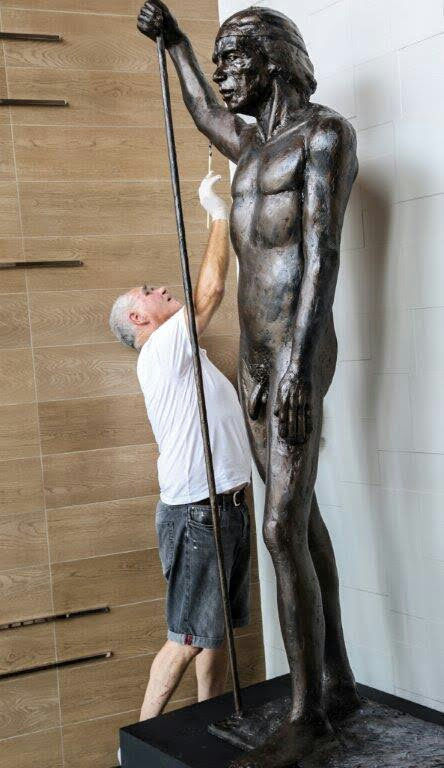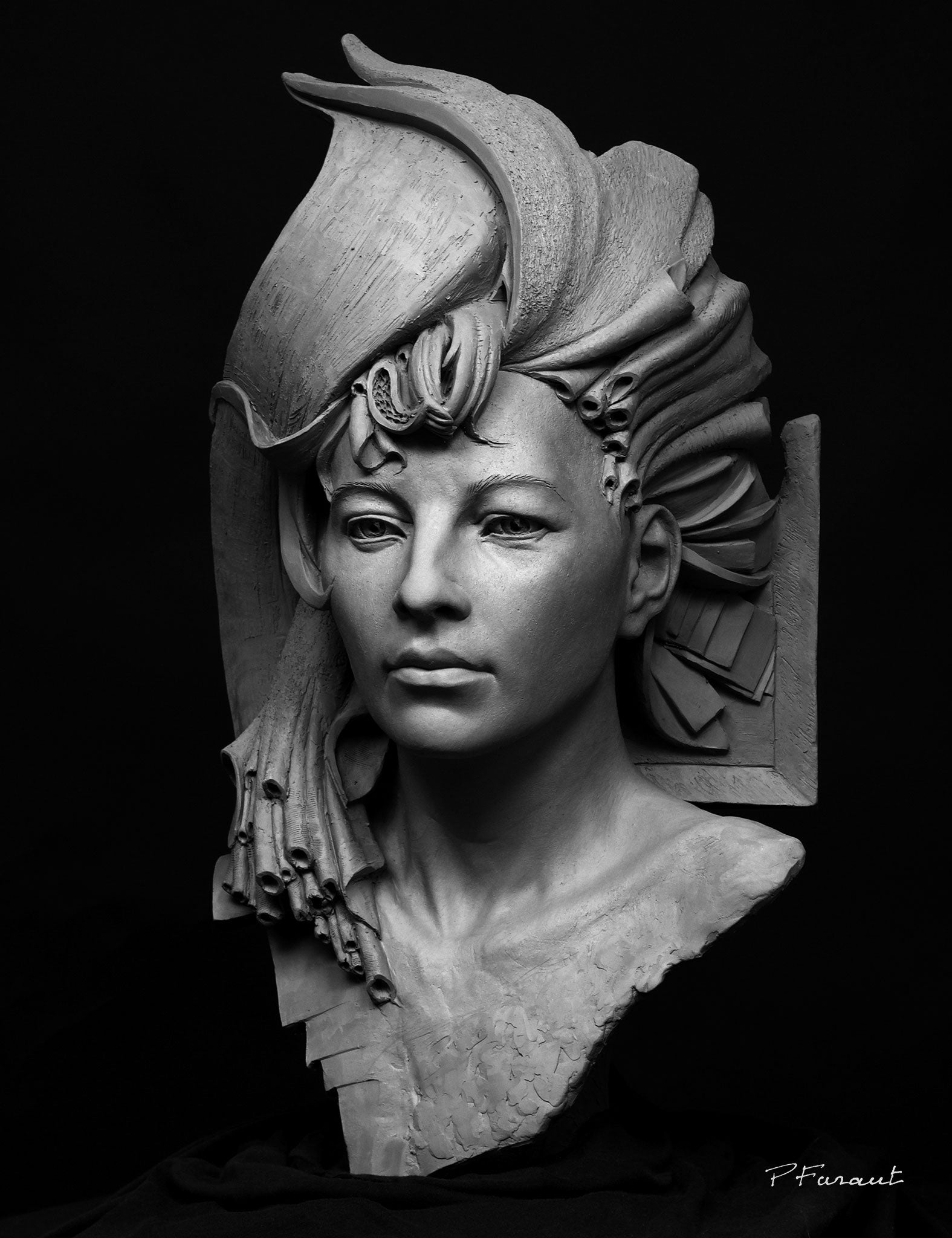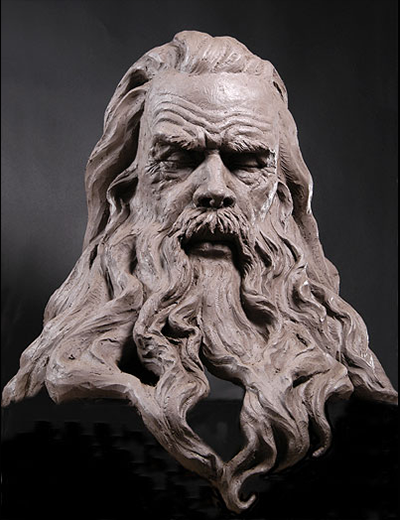Infinite Elegance in Bronze: Unveiling the Art of Bronze Sculptures
Wiki Article
The Evolution of Sculptures: From Ancient to Modern
The Advancement of Sculptures: From Old to Modern. Robert C Hitchcock Sculptor.Sculpture, one of the earliest forms of art, has actually been an integral part of human people for millennia. From the ancient human beings of Egypt and Greece to the contemporary period, sculptures have progressed, mirroring adjustments in creative techniques, materials, and social impacts. This journey with time traces the growth of sculptures, exploring the shifts stylishly, subject issue, and artistic expression.
Starting with the ancient globe, sculptures crafted from rock and later on bronze captured the essence of divine beings, leaders, and day-to-day life. The Renaissance period saw a resurgence of classic sculpting strategies, as musicians sought to imitate the stylish kinds of old Greek and Roman sculptures (Robert C Hitchcock Sculptor). In the contemporary era, musicians challenged traditional borders, accepting abstraction and experimentation with brand-new materials
This exploration will certainly dig right into the varied evolution of sculptures, disclosing the abundant tapestry of artistic expression across various periods and societies.

Ancient Sculptures: From Stone to Bronze
Old sculptures transitioned from being sculpted out of stone to being cast in bronze. Stone sculptures, while excellent in their very own right, were restricted by the nature of the material. Equine Sculptures.The introduction of bronze as a medium for sculptures brought about a revolution in artistic expression. Bronze supplied artists the chance to develop natural and intricate forms that were not possible with stone. The process of casting bronze enabled for the development of several duplicates of a sculpture, enabling larger circulation and conservation of these creative masterpieces.
The change from rock to bronze likewise saw a change in the subject of sculptures. While rock sculptures primarily illustrated gods, sirens, and mythical figures, bronze sculptures began to reflect a broader range of subjects, including day-to-day individuals and pets. This growth of subject showcased the adaptability and versatility of the bronze medium.
Renaissance Rebirth: Forming in the Classic Style
The Renaissance resurgence of sculpture experienced a renewal in the classic design, building upon the advancements made during the shift from stone to bronze in ancient sculptures. During this period, musicians sought to recreate the classical visual and suitables of appeal that were common in ancient Greek and Roman sculptures.Among the essential qualities of the Renaissance rebirth was the focus on naturalism and the human form. Artists like Donatello and Michelangelo aim to catch the physiological information and expressions of their subjects with extraordinary precision. They studied the body and integrated their observations right into their sculptures, leading to sensible and lifelike depictions.
One more important element of the Renaissance revival was the expedition of perspective and deepness. Artists made use of techniques such as contrapposto, where the weight of the body is changed to one side, developing a sense of activity and dynamism. They likewise try out various materials, consisting of marble and bronze, to achieve a level of refinement and details in their sculptures.

Innovation and the Avant-Garde: Breaking Typical Limits
During the Innovation and Avant-Garde motions, carvers pressed the boundaries of typical creative conventions. This period, which emerged in the late 19th and early 20th centuries, saw a significant shift in the way artists approached sculpture. Denying the concept of art as simple replica, modernist sculptors looked for to discover new types, products, and principles.
One of the crucial characteristics of modernist sculpture was the emphasis on abstraction. Carvers relocated away from reasonable representations and rather focused on recording the significance of the subject with streamlined kinds and geometric forms. This departure from conventional depiction permitted musicians to express their emotions and ideas in a much more individual and subjective fashion.

Contemporary Sculptures: Checking Out New Materials and Concepts
With an emphasis on discovering brand-new materials and concepts, contemporary sculptures have reinvented the field of art. Artists today are pressing the borders of conventional sculpture by trying out and utilizing ingenious materials with abstract principles. These sculptures challenge conventional notions of form, materiality, and significance, welcoming customers to engage in a new and thought-provoking imaginative experience.Contemporary artists are embracing a vast array of materials, including plastic, glass, steel, and also raw material. They are not restricted to the standard medium of stone or clay, allowing for better flexibility of expression and trial and error. This change in the direction of unconventional products has actually opened up new possibilities for artists to develop sculptures that are vibrant, interactive, and visually striking.
In addition to exploring brand-new products, contemporary sculptures also dive into complex and abstract ideas. Musicians are now discovering styles such as identity, social concerns, and the atmosphere, using sculpture as a powerful tool for social discourse and self-contemplation. These sculptures test visitors to believe critically and involve with art on a much deeper degree, triggering conversations and provoking emotional feedbacks.
Worldwide Influences: Sculptural Traditions From Worldwide
Sculptural practices from various areas of the globe have dramatically formed the evolution of sculptures throughout background. The global impacts on sculpture have been varied and have added to the splendor and variety of creative expressions. From the old human beings of Egypt, Greece, and Rome to the elaborate carvings of Asian societies, each region has developed its one-of-a-kind sculptural practices that have actually influenced musicians throughout time.In ancient Egypt, sculptures were created largely for religious and funerary purposes. The renowned sculptures of pharaohs and gods, such as the Great Sphinx and the bust of Queen Nefertiti, display the Egyptians' proficiency of rock sculpting and their idea in the immortality.

In ancient Rome, sculpture served both creative and political purposes. Roman sculptures commonly depicted emperors, generals, and mythological numbers, showing the power and grandeur of the realm. The marble statue of Augustus of Prima Porta and the significant Arc of Constantine are significant examples of Roman sculptural success.
Oriental sculptural customs, particularly in India, China, and Japan, have also had a profound influence on the advancement of sculptures. Japanese sculptures, affected by Buddhism, stress simplicity and tranquility, seen in the tranquil sculptures of Buddha and the classy art of bonsai.
The international impacts on sculpture continue to progress in the contemporary age. Musicians today attract ideas from various sculptural customs, integrating brand-new materials, strategies, and concepts to develop thought-provoking and ingenious artworks. The combination of various cultural impacts has triggered a varied and dynamic sculptural landscape, reflecting the interconnectedness of our worldwide look at this site culture. As we seek to the future, it is specific that the international influences on sculpture will remain to shape and redefine this ancient art form.
Conclusion
Finally, the evolution of sculptures has seen a change from old rock and bronze works to the classical resurgence throughout the Renaissance. This was adhered to by the splitting of typical limits via modernism and the avant-garde motion. Today, contemporary sculptures check out new materials and principles, while likewise drawing inspiration from international sculptural traditions. The trip of sculptures shows the ever-changing artistic expressions and cultural impacts throughout history.From the ancient human beings of Egypt and Greece to the contemporary period, sculptures have developed, mirroring changes in artistic techniques, materials, and cultural influences.Starting with the ancient globe, sculptures crafted from stone and later bronze caught the significance of divine beings, leaders, and everyday life.Ancient sculptures transitioned from being sculpted out of rock to being cast in bronze. While rock sculptures predominantly portrayed gods, goddesses, and mythical figures, bronze sculptures started to mirror a broader range of topics, including daily individuals and pets.In verdict, the evolution of sculptures has seen a change from ancient stone and bronze works to the classical revival during the Renaissance.
Report this wiki page